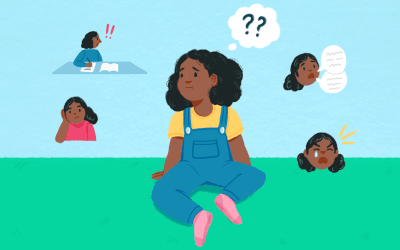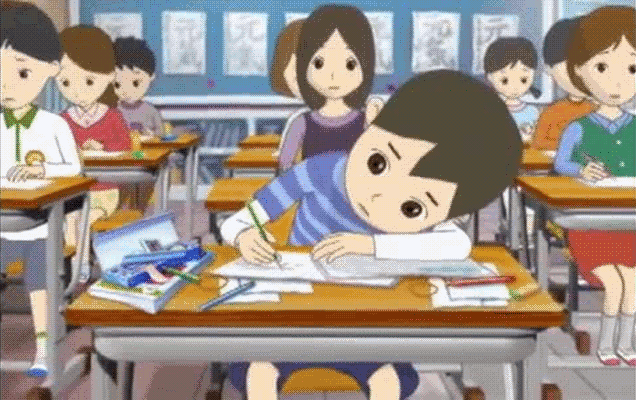Attention-deficit Hyperactivity Disorder (ADHD) is a behavioral disorder. It occurs in children and adolescents but can be lifelong. ADHD is considered a Neurodevelopmental Disorder by The Diagnostic and Statistical Manual of Mental Disorders – V. Some significant symptoms include attention deficit, trouble regulating behavior, and excessive activity. Children with ADHD are usually reckless and impulsive in their behavior. They are more prone to accidents and find themselves in disciplinary action often.


SYMPTOMS
a) Attention deficit: Failure to pay close attention, often not listening when spoken to directly, and forgetting daily tasks. It also includes losing things necessary to carry, difficulty organizing tasks and activities, not always reading through the instruction, failure to finish a task, and being easily distracted.

b) Hyperactivity: Constantly fidgeting with or tapping hands or feet, leaving the seat in situations when expected to remain seated. It also includes running about or climbing in inappropriate situations, inability to play and engage in leisure activities, talking excessively, and difficulty waiting their turn.

The symptoms have a developmental course. It is hard to recognize ADHD symptoms before 4 years of age, even with excessive motor activity. The symptoms are identified in elementary school, as early as 7 years. In adolescence, there might be a decrease in hyperactivity and an increase in the level of inattention. Whereas, in an adult, ADHD impacts the professional and personal life of the person. A person with ADHD might have trouble prioritizing their tasks and finances. It could be difficult for them to control their thoughts and behavior.

Despite being a common disorder in school-going children, it is difficult to diagnose and equally hard to understand. The clinical presentation of the symptoms of ADHD varies from child to child. Some children are hyperactive since birth, and others are inattentive and distractable. The way the symptoms present themselves is highly situational. It means that the symptoms are present in some situations and are absent in others. Hence, Emphasis should be on the duration, severity, and frequency of the symptoms. ADHD shares many symptoms with other disorders like Conduct Disorder and Bipolar disorder, making the diagnosis more challenging.

The higher prevalence in boys could be because of the different gene expressions in boys and girls. The symptoms are usually easily noticeable in males who have highly disruptive behavior. It often goes unrecognized in females because of the level of severity. Females with ADHD tend to be self-effacing, shy, and less vocal about their symptoms.

TREATMENTS
When a child is diagnosed with attention-deficit/hyperactivity disorder (ADHD), parents often have concerns about which treatment is right for their child. ADHD can be managed with the right treatment. There are many treatment options, and what works best can depend on the individual child and family. To find the best options, it is recommended that parents work closely with others involved in their child’s life—healthcare providers, therapists, teachers, coaches, and other family members.
Types of treatment for ADHD include
a) Behavior therapy, including training for parents
ADHD affects not only a child’s ability to concentrate or sit still at school, but it also affects relationships with family and other children. Children with ADHD often show behaviors that be very disruptive to others. Behavior modification is a treatment option that can help reduce these behaviors; it is often helpful to start behavior therapy as soon as a diagnosis is made.
The goals of behavior modification are to learn or strengthen positive behaviors and eliminate unwanted or problematic behaviors. Behavior modification for ADHD can include:
a) Parent training in behavior management;
b) Behavior therapy with children; and
c) Behavioral interventions within the classroom external icon.
These approaches also can be used together for youngsters who attend early childhood programs, it's usually most effective if parents and educators work together to help the child.

b) Medication
It can help children manage their ADHD symptoms in their lifestyle and can help them control the behaviors that cause difficulties with family, friends, and at college.
Several different types of medications are FDA-approved to treat ADHD in children as young as 6 years of age:
I) Stimulants are the best-known and most generally used ADHD medications. Between 70-80% of youngsters with ADHD have fewer ADHD symptoms when taking these fast-acting medications.
II) Nonstimulants were approved for the treatment of ADHD in 2003. They are not doing work as quickly as stimulants, but their effect can last up to 24 hours.
Medications can affect children differently and may have side effects such as decreased appetite or sleep problems. One child may respond well to at least one medication, but to not another.
Healthcare providers who prescribe medication may have to try different medications and doses. The AAP recommends that healthcare providers observe and adjust the dose of medication to seek out the right balance between benefits and side effects. It's important for parents to work with their child’s healthcare providers to find the medication that works best for their child

